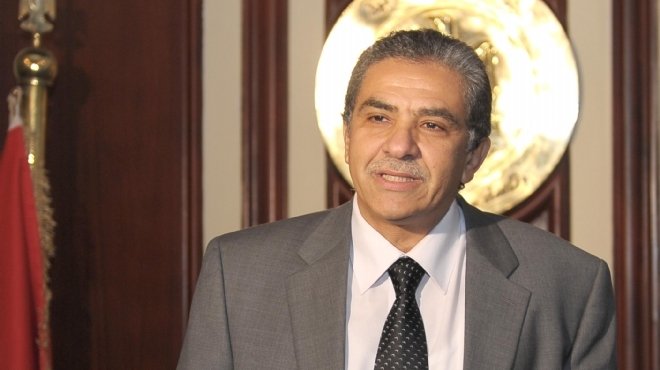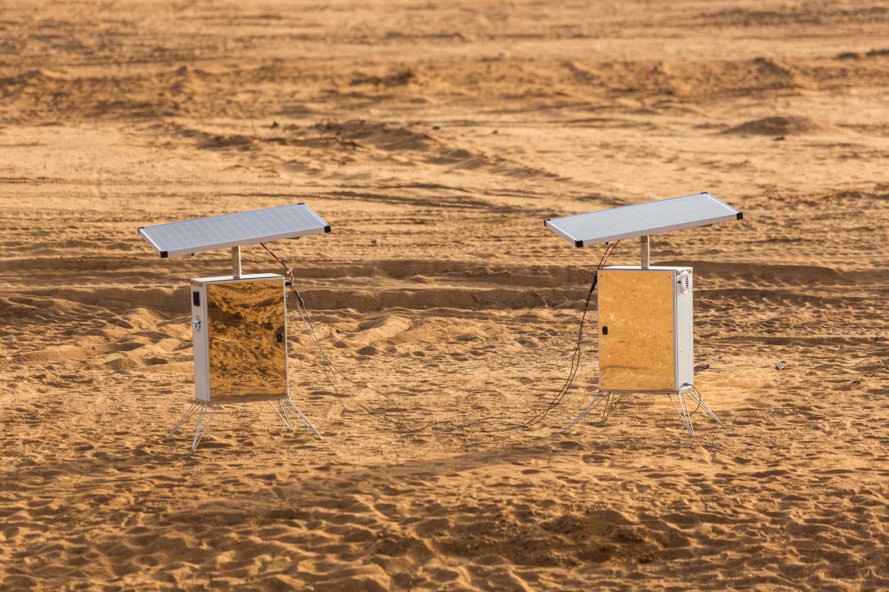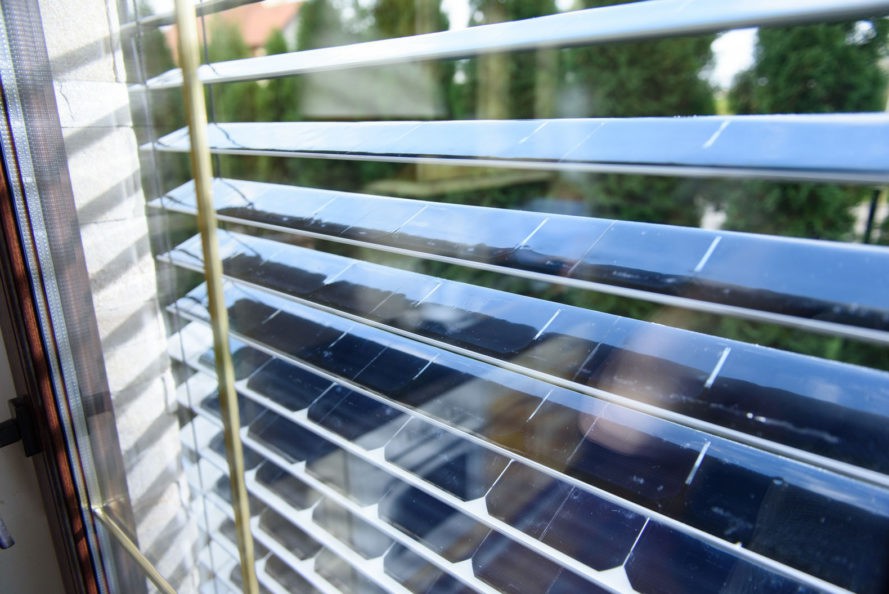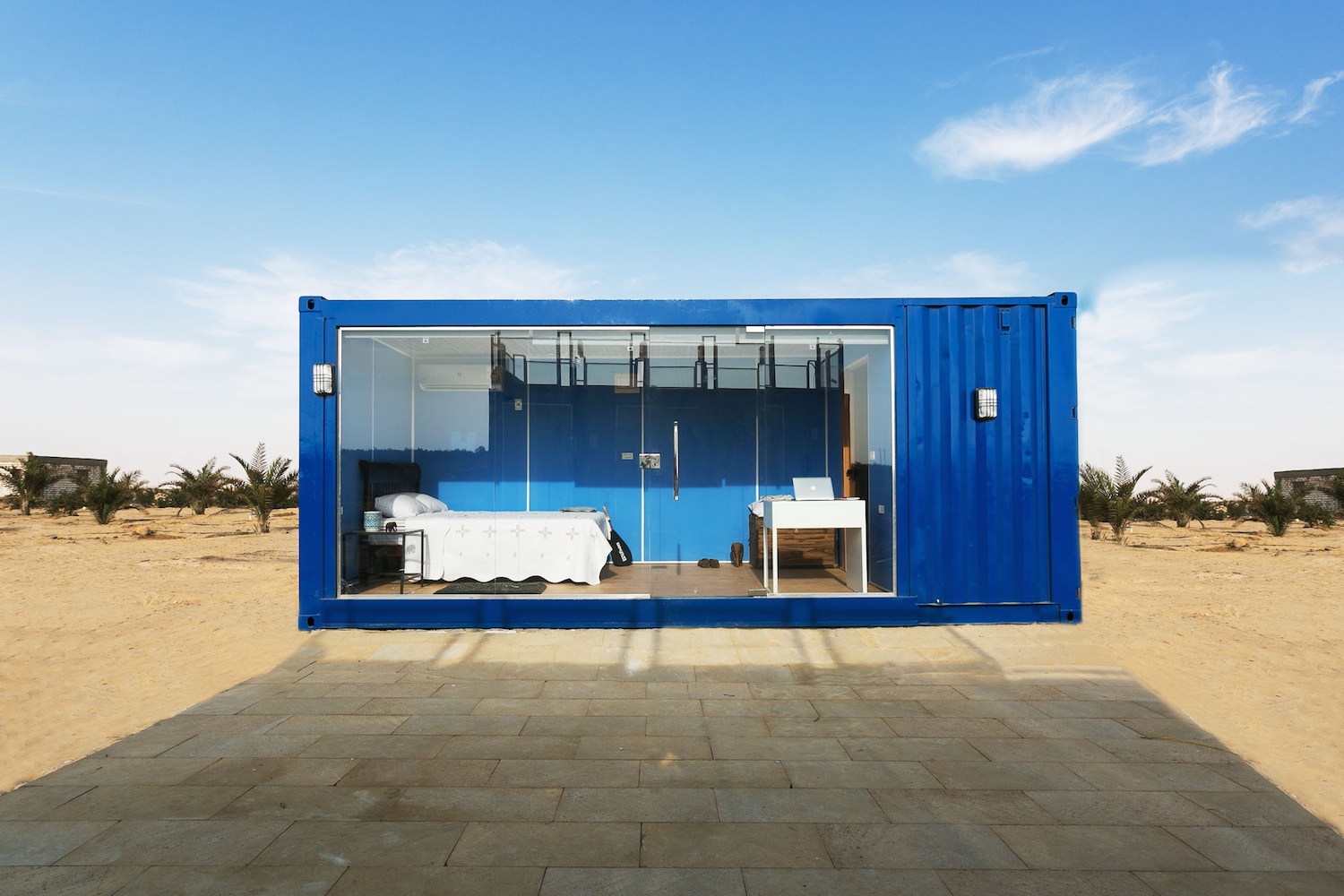All posts by admin
Egypt’s Ministry of Environment Launches “Enough Plastic Bags” Initiative
The Minister of Environment Khaled Fahmy has launched a new national initiative called “Enough Plastic Bags” aiming at limiting the usage of plastic bags in Egypt.
The Ministry of Environment has inaugurated the initiative in line with the global efforts undertaken to reduce the consumption of plastic bags for representing dangers to sanitation, environment and economy.
The EU-funded project will be executed in partnership with the United Nations and Center for Environment and Development for the Arab Regions and Europe (CEDARE).
The initiative aims to encourage citizens to reduce their consumption of plastic bags and to shift towards more environment-friendly alternatives.
Egyptians use about 12 billion plastic bags each year, causing severe problems to the Nile river and the seas. Hence, it negatively affects environmental tourism and diving.
Fahmy announced that several initiatives will be taken in collaboration with malls, grand markets, and pharmacies to encourage the reduction of plastic bags consumption. He further added that advertisement campaigns will be a part of the initiative.
Click here to go to the original source
Desert Twins produce water through condensation in driest place on Earth
One in 10 people on Earth lack access to safe water, which is why artist Ap Verheggen has been working so hard to address water scarcity over the last decade or so. He and the rest of the SunGlacier team, invited by the Dutch Ministry of Defense, recently tested their idea of making water from thin air in what they describe as the driest, hottest place on the planet: the Sahara Desert. They were able to accomplish the feat solely with the power of the sun and a bit of basic physics.
From an ice-making leaf in the desert to a solar-powered desert waterfall, SunGlacier has pioneered creative, artistic approaches to the lack of water in Earth’s dry areas. They recently made water from air in Mali with the solar-powered Desert Twins, two devices built for the Sahara Desert test. One device makes water, the other houses an energy unit. Condensation enables the devices to create water.
But it’s much harder to pull water from air in the Sahara than it is in the Netherlands, where SunGlacier is based. According to the team, air in Mali on a summer day only has around half the water vapor of a dry summer day in the Netherlands. They faced several days of challenges as they tinkered with their devices, adding insulation and re-configuring cooling air streams before they finally succeeded in producing any water.
The team knew their design could operate in ideal conditions, but the Mali success shows it can work just about anywhere in the world. SunGlacier says their device is “probably the world’s first artificial water well to work entirely off the grid.”
SunGlacier intends to keep improving their technology, and say in the future they plan to focus on cleaning and enriching water with salts and minerals, and water storage. Their goal is to build a machine that is able to operate without electricity or a liquid water source, much like a well.
Click here to go to the original source
Revolutionary printed solar sheets reach final trial stages in New South Wales
When disaster strikes, whether it be man-made or natural, power is the resource people need most. For this reason, Professor Paul Dastoor has been working for decades to develop a lightweight “printed solar” panel that is capable of generating power. Now, the invention is in its final trial stages at the University of Newcastle in New South Wales.
The revolutionary solar panels are made by printing electronic ink onto clear, plastic sheets. The final product is lightweight enough it can be quickly shipped to populations in distress – and that is the point. “What we do know right now is that if there’s a disaster the first thing people need is power,” said Dastoor. “Typically that’s generated by a diesel generator and you have to truck in fuel.”
Compared to a silicon model, the lightweight solar panels are made from glass, which makes them much lighter. This, in turn, makes them ideal for developing countries. ”If I had 1000 square metres of typical silicone cells, that would weigh the equivalent of roughly three African Elephants. 1000m2 of this material would weigh about 100 kilograms,” said Vaughan, putting the product’s weight into perspective.
The panels are also very economical to produce. After doing extensive economic modeling, the research team has concluded that they can produce the printed solar scales for less than $10 a square meter. “Try buying carpet for less than $10 a square metre,” said Vaughan.
Based on data collected by the research team thus far, it is estimated that the university’s small printer can produce hundreds of meters of solar cells every day. In Professor Dastoor’s words, this “means that we’ll be able to power using scaled up printers, say thousands and thousands of homes… it’s very exciting.”
You can expect to find the printed solar panels available for sale in about three years time. And, they won’t be marketed to just go on roofs. “One of the things about these cells is that they’re not as sensitive to light intensity,” said Dastoor. “Any part of the roof will generate electricity; even walls, windows, surfaces of vehicles, tents, lightweight structures, roofs that can’t take a heavy conventional silicone solar cells are now accessible to these modules.”The inventor will “massively increase” the area of solar cells so energy can be produced in a variety of new ways. Added Dastoor, “We think it’s going to be a big change to the way in which we think about power being generated renewably.”
Click here to go to the original source
SolarGaps’ new solar blinds shade windows and generate clean energy
What if your window blinds could power your home in addition to shading its rooms? That’s the idea behind SolarGaps’ new solar blinds. These smart blinds designed to track the sun can be controlled via an app, and the company says their product will slash energy bills by as much as 70 percent.
SolarGaps’ smart solar blinds, created by Ukrainian inventor Yevgen Erik, could revolutionize how we live our lives indoors, and obtain the energy we consume in our homes. The company says the blinds are extremely efficient can generate 100 watts of power per 10 square feet of a window – enough energy for three MacBooks or 30 LED light bulbs, according to the company.
The company also says the installation process is simple enough for homeowners to do themselves using SolarGaps’ instructions – and after the blinds are plugged in, the renewable energy they generate begins to power home devices. Their app allows users to change the angle of the blinds, lower or raise them, or check out how much energy they are generating.
The blinds are made with solar cells from SunPower and come with a 25 year lifespan. The outer part is made with Aluminum. SolarGaps says they’ll work in a wide variety of climates and temperatures, from negative 40 degrees Fahrenheit up to 176 degrees Fahrenheit.
The company also markets their groundbreaking blinds as affordable, and able to generate more electricity than competing smart blinds currently on the market. They’re currently crowdfunding on Kickstarter; a XS Sized Set is $390, 50 percent off the retail price, and measures 36 by 36 inches, or 32 by 36 inches. SolarGaps is also offering small, medium, large, extra large, and extra extra large sizes, as well as two custom bundles. You can check out the campaign here.
Click here to go to the original source.
UK tests cheaper, longer-lasting roads made with recycled plastic
Around 24.8 million miles of roads crisscross the surface of Earth. And hundreds of millions of barrels of oil have been used for that development. Engineer Toby McCartney came up with a solution to that waste of natural resources and the growing plastic pollution problem. His company, Scotland-based MacRebur, lays roads that are as much as 60 percent stronger than regular asphalt roads and last around 10 times longer – and they’re made with recycled plastic.
Our city roads require a lot of maintenance over time as weather deteriorates them and potholes open up. Meanwhile there are around five trillion pieces of plastic in the ocean. McCartney came up with an answer to both issues. He turns 100 percent recycled plastic into what he calls MR6 pellets, or small pellets of waste plastic, which replace bitumen, the material used to bind roads together (extracted from crude oil) and sold by oil companies like Shell.
Normal roads are comprised of around 90 percent rock, sand, and limestone, with 10 percent bitumen. MacRebur’s process replaces most of the bitumen, using household waste plastic, farm waste, and commercial waste. Much of the trash would have otherwise ended up in a landfill.
At asphalt plants the MR6 pellets are mixed with quarried rock and a bit of bitumen, and a plant worker told the BBC the process is actually the same “as mixing the conventional way with additions into a bitumen product.”
McCartney was inspired to design plastic roads after his daughter’s teacher asked the class what lives in the ocean, and his daughter said, “Plastics.” He didn’t want her to grow up in a world where that was true. He’d also spent time in India, where he saw locals would fix holes in the road by putting waste plastic into the holes and then burning it. He started MacRebur with friends Nick Burnett and Gordon Reid.
MacRebur’s first road was McCartney’s own driveway, and now the company’s roads have been laid in the county of Cumbria in the United Kingdom.
Click here to go to the original source
Large Hills of Trash on Egyptian Streets are about to Turn into Business Opportunities
Wherever you are in Egypt, the sight of garbage on almost every street has become the norm. Sewage and industry waste is still dumped in the Nile. With a population closing in on 100 million, the waste problem is not going away soon. While it can be a liability, IWEX turned it into an opportunity and launched the “Leeha 2eema – ليها قيمة” program, a waste management entrepreneurship program that aims at supporting 45 waste management startups, on a nationwide scale.
“Leeha 2eema – ليها قيمة”, meaning “it has value”, offers early stage waste management startups, from all governorates in Egypt, the opportunity to build companies that focus on local manufacturing and value addition products or services by offering them sector specific training, advisory and consultancy as well as access to finance, markets and service providers.
Egypt is a fertile country for startups in this specific sector. Almost 60% of Egypt’s total waste is organic waste, which can be used for numerous other projects instead of simply left to rot. In 2010, Egypt produced around 20 million tons of Municipal Solid Waste; Cairo alone produced 11,000 tons per day, that’s four million tons per year. Egyptian industries produce around 10 million tons of waste per year. The numbers are scary, but can definitely be made use of for both business and the environment.
Every one of us generates about one kilogram of waste per day, which can fuel almost one hour of cooking time on natural gas. Sorted recycables can be sold at a good price, along with many solutions to be presented by “Leeha 2eema – ليها قيمة”.
“Leeha 2eema – ليها قيمة” program will offer means of support to early-stage startups: a 20-day of technical and business training sessions, six workshops on business modelling, market research, prototyping and supply chain management, 10 prototyping grants for the top performing startups, Technical, financial, marketing and needs-based consultation sessions, networking opportunities with potential clients, suppliers, financiers and key entrepreneurship ecosystem stakeholders through a major public event, and access to debt and equity financing investors/entities.
Seven startups from outside Cairo will be supported to attend the program – travel and accommodation will be covered.
The deadline for the call is on April 14th.
IWEX Green Growth, Industrial Waste Management and SME Entrepreneurship Hub in Egypt, is one of the projects funded by the Middle East and North Africa (MENA) Transition Fund in Egypt, through the African Development Bank (AfDB) and implemented by the Industrial Council for Technology and Innovation – Ministry of Trade and Industry – through the Egypt National Cleaner Production Center (ENCPC).
Click here to go to the original source
How 2 Egyptian entrepreneurs are building incredible houses out of abandoned shipping containers
Using cargotecture – container architecture – Karim Rafla and Youssef Farag are upcycling discarded shipping containers which would otherwise be left to rot, to create everything from houses to restaurants, to possible governmental projects.
“Architecture should speak for its time and place,” Frank Gehry once said. Ours is a time of excess, opulence, a time of more is more; where countries are vying for the privilege of building the tallest tower in the world, the most luxurious hotel in the world, of submerging rooms, entire homes, under water. Just because. Inversely, it’s also a time where some realise the absurdity of this constant insatiable quest for more and instead of pushing to make more, push to reimagine what we already have.
Egyptian startup Qubix, founded by Youssef Farag and Karim Rafla, focuses on cargotecture; an amalgamation of cargo and architecture, the modern day mode of construction upcycles used shipping containers and uses them as the basis for structures – anything from homes to restaurants.
“Containers are thrown out once they’re past their shipping life,” explains Yousef Farag, co-founder of the company. Qubix repurposes those discarded containers to give them second life. The concept is not a new one – it was patented as far back as 1987 in the United States – but it one which has gone largely unutilised in the Arab world, Egypt in particular. Which is precisely why the two entrepreneurs initially started capitalising on it.
While coming up with a thesis model for his business project in London, Rafla came across the concept of cargotecture. “I found a place in London that was a city made entirely out of containers, restaurants, homes, shops, everything. So I said ‘why don’t we have this in Egypt?’” he recounts.
He moved back to Egypt, teamed up with his best friend Farag, and the two – neither of whom had a background in architecture or engineering as they had studied business and finance respectively – began to brainstorm how they could make this sustainable form of architecture a reality in their homeland. The duo brought on Fatma Moemen as their head architect and designer, and got to work. “It was literally a backyard startup,” Rafla says. “We bought our first 20-foot container, put it in Yousef’s garden, and just started experimenting.”
By mere virtue of reusing the existing instead of creating from scratch, thousands of kilograms of steel are saved, as is cost – “when you compare it to traditional brick and mortar buildings, containers are made up of much cheaper materials,” Farag explains. There also arises a strange duality when it comes to cargotecture; the structures are by nature built to be strong and as such function as resilient buildings; at the same time, they are easily movable and are vastly versatile in nature. The modular structures only come in two sizes – 20 feet and 40 feet – but by default of their design, they are created to interlock, which makes their possibilities endless.
They began working on their prototype in March 2016 and by August, had their first order. In six short months, the duo have already delivered a fully functional home in Beni Suef, a BeFit training facility in Maadi, and are currently working on a restaurant. The inherent success of the concept of cargotecture hinges on the sheer practicality of it. “It’s environmentally friendly, it’s cost-efficient, it’s sustainable, it’s faster to build, it’s stronger as a structure, and it’s adaptable to any industry,” Rafla explains of the innocuously ingenious shipping container. “It’s such a brilliant idea; it’s one of those things that don’t exist in Egypt and you’re lucky enough to be the pioneer of it.”
Companies sell containers once they’re past their shipping life. Qubix assess the leftover metal boxes for structural integrity and to ensure no chemical usage. “We have to make sure there’s nothing hazardous, nothing chemical that could harm user in the future,” explains Rafla, “We usually look for containers that were used for textiles or machinery.” After the containers pass inspection, it’s fair game.
The innate malleability of the structures makes them ideal for a myriad of things, and the founders envision them playing a greater role in Egypt – from startups to low income housing. “Cargotecture is very promising because it offers limitless possibilities,” emphasizes head designer Fatma Moemen, “I see this becoming very successful in the future. It would open up a lot of possibilities for Egypt, especially for people with startups; for instance for people our age who want to have their own business or company, this would be perfect for them because it’s cost efficient.”
Click here to go to the original source
Egypt: Pilot Project to Purchase Garbage From Citizens to Start in Cairo
A pilot project to purchase garbage from citizens would start with two outlets in Cairo this month, the state newspaper Al-Akhbar quoted the governor of Cairo Atef Abdel Hamid.
One outlet would be at Ibn Sender Square in Hadaek Al-qoba district and the other at Aswan Street in Heliopolis district, both would be run by some local NGO’s under the supervision of the governorate, Abdel Hamid said.
He explained in a his statement reported by the newspaper, that “this project will achieve a major breakthrough in the field of hygiene, if successful, along with substantial economic feasibility, given the need of recycling plants that can find only 25% of its needs for the waste, as well as it will provide job opportunities for young people employed by the NGO’s.”
The garbage is a major problem in Egypt because of its spread in most streets. An earlier report by the Ministry of Environment revealed that the total solid waste in Egypt amounts to 75 million tons per year with 55 tons per day.
The Ministry of Local Development works to develop effective solutions to the problem of garbage in the governorates, and has already asked the governors to issue an administrative decision to fine any store, café, restaurant or any other facility that throw rubbish in streets, and to close these facilities in the case of repeating.
Click here to go to the original source.
Egyptian researchers turn shrimp shells into biodegradable plastic
Researchers at Egypt’s Nile University are developing a way to turn dried shrimp shells that would otherwise be thrown away into thin films of biodegradable plastic they hope will be used to make eco-friendly grocery bags and packaging.
Six months into their two-year project, the research team has managed to create a thin, clear prototype using chitosan, a material found in the shells of many crustaceans.
“If commercialised, this could really help us decrease our waste… and it could help us improve our food exports because the plastic has antimicrobial and antibacterial properties,” Irene Samy, a professor overseeing the project, told Reuters.
The researchers buy unwanted shrimp shells from restaurants, supermarkets and local fishermen at cheap prices.
Using shrimp shells is more sustainable because it could replace synthetic materials used in plastics and cut the amount of biowaste produced by the Egyptian food industry, Samy said.
The shells are cleaned, chemically treated, ground and dissolved into a solution that dries into thin films of plastic, a technique the team says has potential for large-scale industrial production.
“Egypt imports around 3,500 tonnes of shrimp, which produce 1,000 tonnes of shells as waste… Instead of throwing the shells away, we can make biodegradable plastic bags,” Hani Chbib, a researcher on the project, told Reuters.
The project is a collaboration between the Nile University team of four and another research group at the University of Nottingham in Britain, where Samy conducted her post-doctoral research and first started experimenting with the idea.
The team has only produced small samples and the project is not yet ready to go into commercial production but the team is working hard to develop properties that would allow the material to go into widespread use.
“We are continuing to work on enhancing its properties, like thermal stability and durability,” Samy said.
Click here to go to the original source











